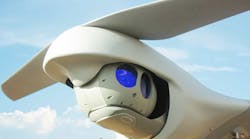CP Technologies recently launched a new division, CP Aeronautics, to provide integrated turnkey solutions based on unmanned aerial systems (UAS) platforms, payloads, data links, ground control stations (GCS) and communications for defense and civil applications.
CP Aeronautics’ systems offer operationally proven solutions for Intelligence, Surveillance and Reconnaissance (ISR) systems requirements. The company’s broad product portfolio has demonstrated excellent performance and operability in very demanding environments. Backed by continuous research and development, these systems are built on three decades of technological and operational experience.
Shortly after the announcement, IndustryWeek had the opportunity to connect with Brad Pilsl, vice president of business development at CP Aeronautics, to hear his insights into this growing marketplace.IW: How do you see this market continuing to evolve?
Pilsl: I see several trends that should continue to impact the UAS market in the near future.
First, consolidation among US defense original equipment manufacturers (OEMs) continues, along with a growing number of start-up companies coming into the defense innovation markets. We see this leaving a critical gap in the US supply chain for mid-tier OEMs that are proven, flexible and responsive to capture services contracts, innovation and RDT&E programs, and new programs of record that may fall below the very large prime contractors’ pursuit thresholds, but are critical for pushing innovation forward. This consolidation also may risk a certain brittleness in the American UAS supply chain, and we believe that the US needs more mid-level manufacturers to ensure a secure, stable supply chain of UAS and their related technologies and systems.
Second, we see opportunities to provide low cost/low risk/high capability systems that would truly allow commanders to manage risk-to-force and risk-to-mission by putting larger numbers of affordable UAS forward while retaining personnel and more exquisite platforms farther from the fight. This is especially important in the Indo-Pacific region where numbers will matter.
Third, the evolving regulatory environment of operating UAS in the national airspace will eventually settle out and I believe we will start to see commercial opportunities open up for beyond line of sight, larger, longer-loiter UAS platforms.
IW: How do you see other emerging technologies such as AI having an impact on the UAS market?
Pilsl: Autonomy in commercial and consumer markets will continue to mature along with related hardware and software technology advances – which I believe will lead to increased public awareness and acceptance of UAS solutions for public transport, logistics, delivery, public safety uses, etc. These advances should also pay dividends in increasing capabilities and lower prices in defense capabilities.
We see that increasing AI and machine learning (ML) capabilities at the tactical edge will be required, allowing more processing at the point of collection (sensors). AI/ML at the tactical edge should reduce bandwidth and allow for sharing of information among distributed platforms and personnel on the move – even in communications limited environments. AI/ML will also be important in improving ground control station (GCS) capability – especially for small form/factor, ruggedized GCS for expeditionary troops on the move.
AI/ML will also continue to advance the ability for manned-unmanned teaming and swarming similar or dissimilar platforms.
IW: Do you foresee these systems having an impact on manufacturers in the future?
Pilsl: Absolutely. We see that the ability to service both defense and civil/commercial markets will be an advantage allowing us to generate revenue to feed innovation of our hardware products to the benefit of our defense customers. We intend to grow our manufacturing footprint by adding several hundred new, high-tech jobs as we ramp up UAS and related systems (data links, ground control stations, ground data terminals, etc.) over the very near future.




